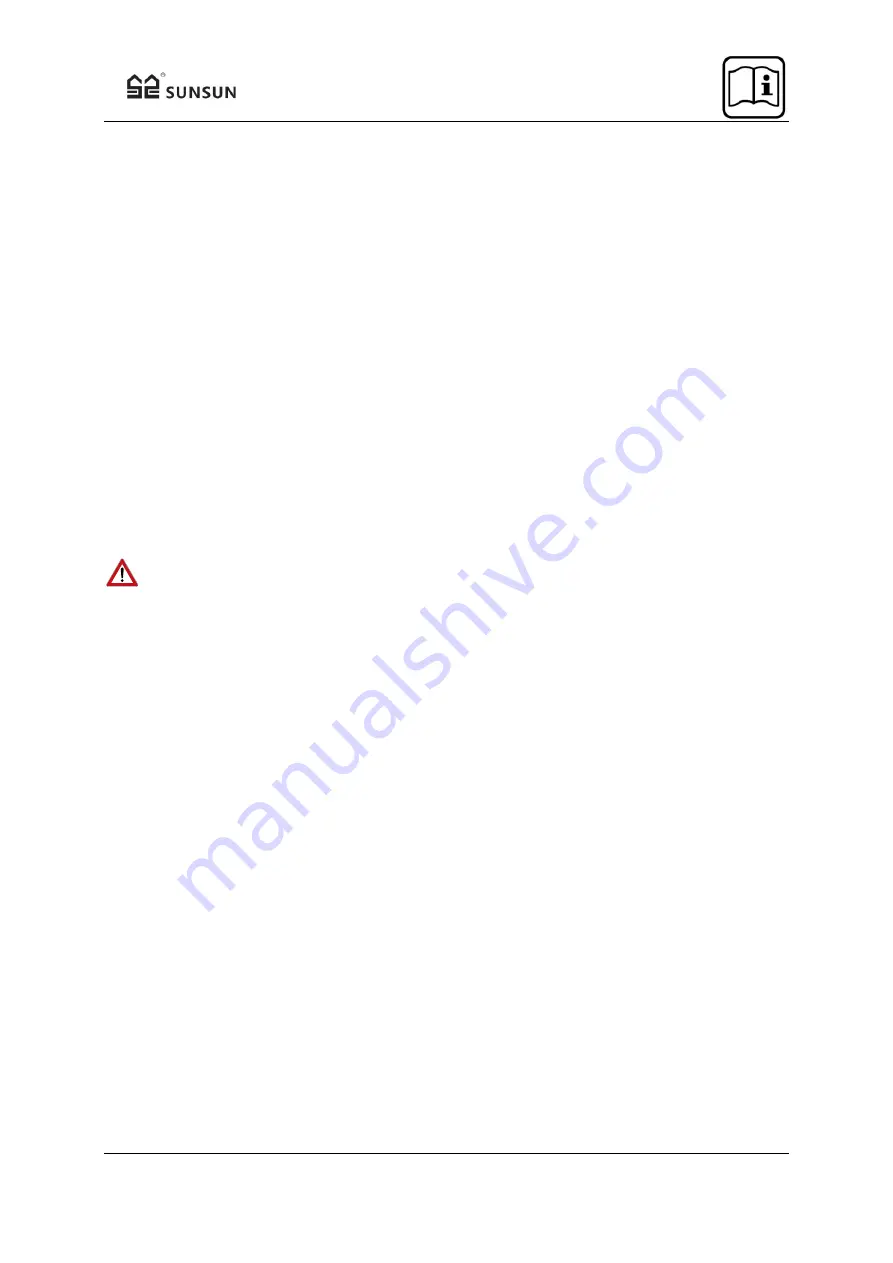
© by WilTec Wildanger Technik GmbH
Item 50339, 50340
Page 4
05 2022
-1
Resistance
•
The maximum temperature of the pumped liquid should not 35
℃
in continuous oper-
ation.
•
The transport of aggressive fluids (acids, bases, etc.) as well as of abrasive substances (e.g.,
sand) must be avoided.
Electrical connection
•
The electrical connection is made to an earthed socket 230
V ~ 50
Hz. Fuse min. 6
A.
•
The motor is protected from overcharge and blockage with the help of the built-in thermal motor
protection. When overheated, the pump motor is automatically switched off by the thermal pro-
tection; after cooling down, the pump automatically re-starts.
Mains connection
The pond pump that you have purchased is already equipped with a protection plug. The pump is meant
to be connected to a 220/230
V~50
Hz safety socket. Make sure that the socket is sufficiently protected
(min. 6
A) and fully functional. Plug in the plug, the pump is operational.
Installation
NOTE
:
1.
Make sure that the existing mains voltage and frequency match the specifications on the name-
plate.
2.
Do not place the pump directly into the pond mud. Place it on a stone to avoid that mud be
sucked in.
3.
Check the pump head (maximum depth). The corresponding value is given on the nameplate,
too.
4.
The pump is installed the following way: either in a stationary position with a fixed pipeline or in
a stationary position with a flexible pipeline 20
cm min. below the water surface.
5.
Place the cable in a safe manner to exclude any danger of it being damaged.
6.
The pump can be used to operate an artificial stream.
NOTE:
The higher the delivery height, the lower the output!
7.
Connect the pump to the power supply.
8.
The pump works until it is disconnected again.
Commissioning
After thoroughly reading the instructions for installation and use, you can operate the pump; obey the
following hints:
•
Connect the suction cups to the motor housing and suction basket.
•
The pump must not be operated without filter basket. The filter basket protects the device from
obstructions and consequential overheating; therefore, it must be cleaned regularly.
•
Check if the pressure line is properly attached.
•
Check if the electric source has 230
V~50
Hz.
•
Check if the socket is in a good condition.
•
Make sure that neither humidity nor water may get into contact with the mains connection.
•
Place the pump beneath the surface of the water.
•
Avoid any running dry of the pump.













